 1984 Audi 90 (B2, Typ 81,85) Dimensions, Size & Specs
1984 Audi 90 (B2, Typ 81,85) Dimensions, Size & SpecsMeasurements of the 1984 Audi 90, engineered for optimal performance and comfort
| Dimensions | |
|---|---|
| Length: | 4465 mm175.8 in14.6 ft |
| Width: | 1682 mm66.2 in5.5 ft |
| Height: | 1365-1376 mm53.7-54.2 in4.5-4.5 ft |
| Trunk Capacity: | 451-541 liter15.9-19.1 cu ft |
| Weight Specifications | |
| Curb Weight: | 1060-1200 kg2337-2646 lbs |
| Maximal permitted Weight: | 1520-1660 kg3351-3660 lbs |
| Tire Specifications | |
| Rims Size: |
|
| Tire Sizes: |
|
The Audi 90 (B2, Typ 81/85) is a compact sedan produced from 1984 to 1987, exemplifying Audi's engineering during the mid-1980s. With an overall length of 4465 mm (approximately 176 inches) and a width of 1682 mm (66.2 inches), the Audi 90 presented a balanced and aerodynamic silhouette well-suited for urban and suburban driving. Its height ranges between 1365 mm and 1376 mm (53.7 to 54.2 inches), contributing to a low and sleek profile that enhanced its sporty yet practical appeal.
Weighing between 1060 and 1200 kg (2337 to 2645 lbs) curb weight, this vehicle offered a lightweight but sturdy build, allowing for agile handling with its aerodynamic body design. The maximum weight capacity ranged from 1520 to 1660 kg (3351 to 3662 lbs), supporting ample passenger and cargo loads without compromising stability.
The Audi 90's luggage capacity varied between 451 and 541 liters (15.9 to 19.1 cubic feet), providing generous storage for a sedan of its class and era. Alongside these features, the car rolled on 14-inch rims, fitted with tire sizes 185/60 R14 or 175/70 R14, which contributed to a comfortable and composed ride.
Overall, the Audi 90 (B2, Typ 81/85) sedan remains a notable representation of 1980s Audi engineering, blending compact dimensions with practical space and driving dynamics. Its size reflected mid-sized sedan standards of the time, making it an appealing choice for drivers seeking both style and function in a classic German automobile.
Discover the standout features that make the 1984 Audi 90 a leader in its class
Have a question? Please check our knowledgebase first.
The Audi 90 B2, specifically the Typ 81, 85 generation produced from 1984 to 1987, has a length of 4465 mm (approximately 175.8 inches), a width of 1682 mm (about 66.2 inches), and a variable height ranging between 1365 mm and 1376 mm (roughly 53.7 to 54.2 inches). These dimensions place the car firmly within the compact executive sedan class for that era, balancing interior space and manageable exterior size for urban and highway driving.
The curb weight of the Audi 90 B2 (Typ 81, 85) ranges from 1060 kg to 1200 kg (approximately 2337 to 2645 pounds), depending on the variant and equipment level. The maximum permissible weight, which includes the vehicle's weight plus passengers, cargo, and fuel, ranges from 1520 kg to 1660 kg (about 3351 to 3659 pounds). These weight figures reflect the vehicle’s robust build and include allowances that ensure it can safely carry several passengers and luggage without compromising stability or performance.
The Audi 90 B2 (Typ 81, 85) offers a luggage capacity ranging from 451 to 541 liters (approximately 15.9 to 19.1 cubic feet). This relatively spacious trunk space suits a variety of daily needs such as grocery shopping, luggage for trips, or transport of sports equipment. For a sedan of its size and era, this capacity is quite practical, providing ample room without compromising passenger space or overall car dimensions.
Yes, the Audi 90 B2 (Typ 81, 85) fits comfortably into a standard European or North American garage. Given its length of 4465 mm (175.8 inches) and width of 1682 mm (66.2 inches), it fits well within typical garage dimensions, which usually accommodate vehicles up to 5 meters (196.9 inches) in length and around 2.5 meters (98.4 inches) in width. Its compact profile ensures ease of parking and maneuverability within most home garages.
The Audi 90 B2 (Typ 81, 85) with a width of 1682 mm (66.2 inches) and height ranging around 1365-1376 mm (53.7-54.2 inches) is relatively typical compared to peers like the BMW 3 Series E30 and Mercedes-Benz 190 (W201). Both competitors have comparable widths around 1680-1700 mm and heights near 1340-1390 mm. The Audi offers a slightly lower height than some rivals, contributing to a sportier stance, while its width ensures stable handling and decent interior space.
The Audi 90 B2 is equipped with 14-inch rims, paired with either 185/60 R14 or 175/70 R14 tires. These tire sizes reflect a balance between comfort and handling performance typical of mid-1980s sedans. The relatively narrow width of these tires compared to modern standards contributes to less rolling resistance and improved fuel efficiency, while maintaining adequate grip and ride comfort. This setup supports the vehicle's balance between sporty driving and daily usability.
Compared to its predecessor generation, the Audi 90 B2 (Typ 81, 85) shows a moderate increase in curb weight, with figures from 1060 kg to 1200 kg (2337 to 2645 pounds). The earlier models were generally lighter, reflecting evolving safety standards, structural reinforcements, and added features in the B2 generation. Although heavier, the B2 generation benefits from improved build quality, enhanced safety, and better ride comfort, representing a trade-off for a more refined driving experience.
When compared to contemporaries like the BMW 3 Series E30 or Mercedes-Benz 190 series, the Audi 90 B2’s 4465 mm length and 1682 mm width places it competitively within the compact executive vehicle segment of the 1980s. Its weight, ranging between 1060 kg and 1200 kg (2337-2645 pounds), is generally on par with these rivals, which had curb weights in the 1100-1300 kg range. The Audi’s strong build quality and practical dimensions made it a solid competitor balancing everyday usability with sporty character.
The Audi 90 B2’s relatively low height, ranging from 1365 mm to 1376 mm (53.7 to 54.2 inches), contributes positively to its aerodynamic profile, helping reduce drag and improve fuel efficiency especially at highway speeds. A lower center of gravity enhances handling stability and cornering performance, making the car feel more responsive especially in twisty roads. However, this design may slightly affect interior headroom, but generally offers a sportier and more connected driving experience aligned with Audi’s performance-oriented ethos.
The Audi 90 B2 (1984-1987) offers a well-laid-out interior emphasizing both passenger comfort and driver ergonomics. Its exterior dimensions translate into supportive seating with enough legroom and shoulder room for front and rear occupants typical of a mid-1980s compact executive sedan. The sedan's width and balanced height contribute to a spacious feel inside. Additionally, controls are ergonomically positioned, making it easy to operate while driving. Though modern cars have advanced interior packaging, the B2 remains comfortable for its time and segment.
Discover similar sized cars.
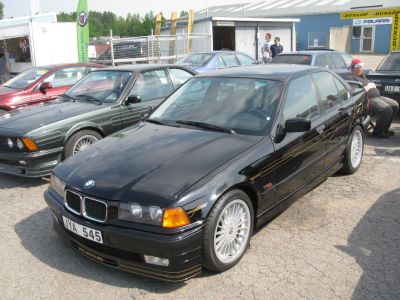
| Production: | 1993-1998 |
|---|---|
| Model Year: | 1995 |
| Length: | 4433 mm174.5 in |
| Width: | 1698-1710 mm66.9-67.3 in |
| Height: | 1346-1373 mm53.0-54.1 in |
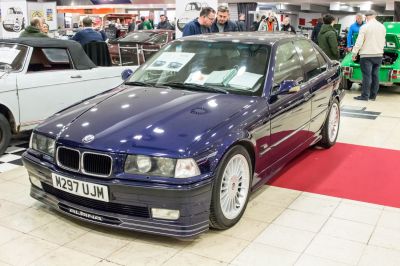
| Production: | 1993-1999 |
|---|---|
| Model Year: | 1993 |
| Length: | 4433 mm174.5 in |
| Width: | 1698 mm66.9 in |
| Height: | 1373 mm54.1 in |
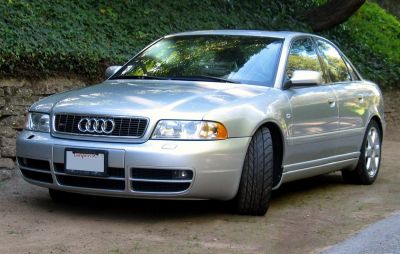
| Production: | 1997-2001 |
|---|---|
| Model Year: | 1998 |
| Length: | 4483 mm176.5 in |
| Width: | 1733 mm68.2 in |
| Height: | 1396 mm55.0 in |
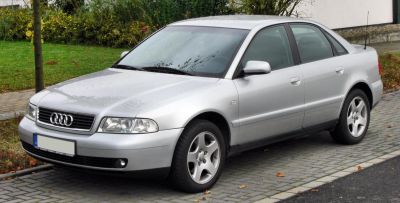
| Production: | 1999-2000 |
|---|---|
| Model Year: | 1999 |
| Length: | 4479 mm176.3 in |
| Width: | 1733 mm68.2 in |
| Height: | 1418 mm55.8 in |
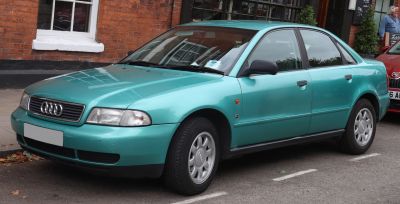
| Production: | 1994-1999 |
|---|---|
| Model Year: | 1995 |
| Length: | 4479 mm176.3 in |
| Width: | 1733 mm68.2 in |
| Height: | 1415 mm55.7 in |
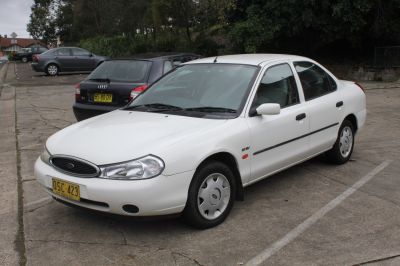
| Production: | 1995-2001 |
|---|---|
| Model Year: | 1996 |
| Length: | 4480-4556 mm176.4-179.4 in |
| Width: | 1751 mm68.9 in |
| Height: | 1424-1430 mm56.1-56.3 in |

| Production: | 1994-1998 |
|---|---|
| Model Year: | 1995 |
| Length: | 4433 mm174.5 in |
| Width: | 1699 mm66.9 in |
| Height: | 1365 mm53.7 in |
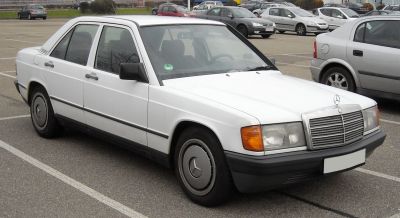
| Production: | 1982-1988 |
|---|---|
| Model Year: | 1982 |
| Length: | 4420-4450 mm174.0-175.2 in |
| Width: | 1678-1706 mm66.1-67.2 in |
| Height: | 1338-1390 mm52.7-54.7 in |
